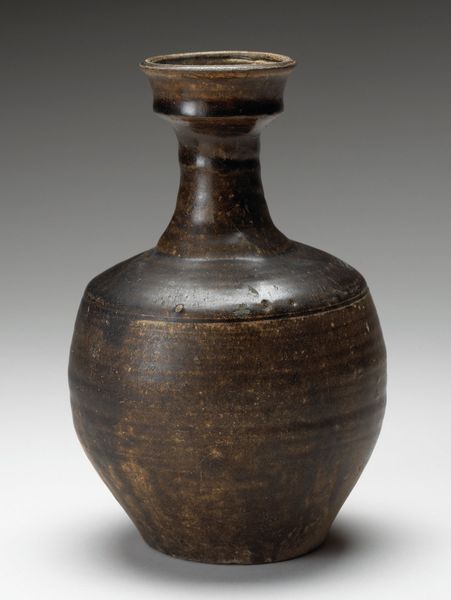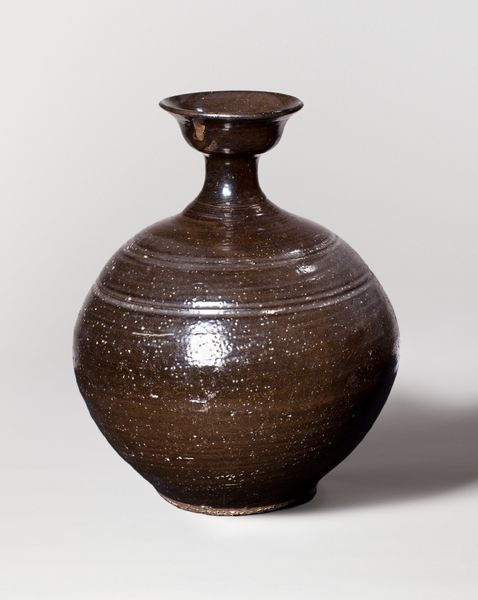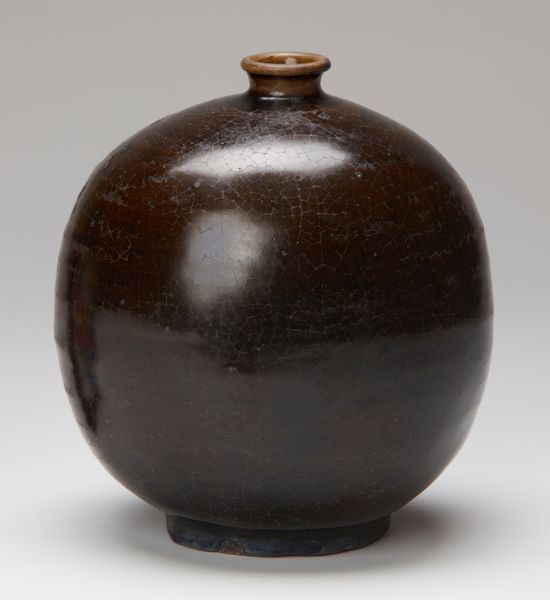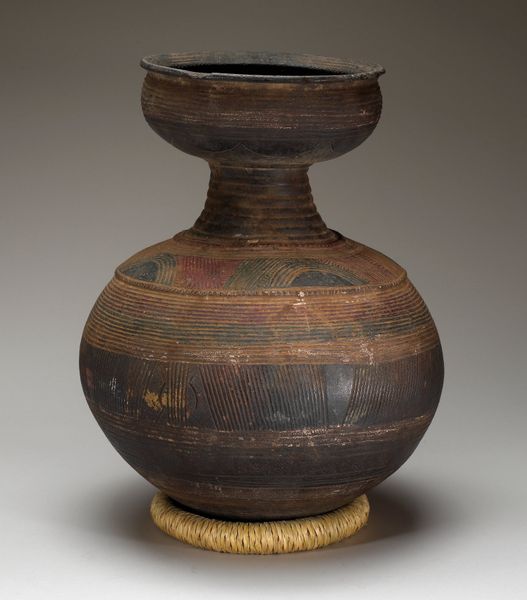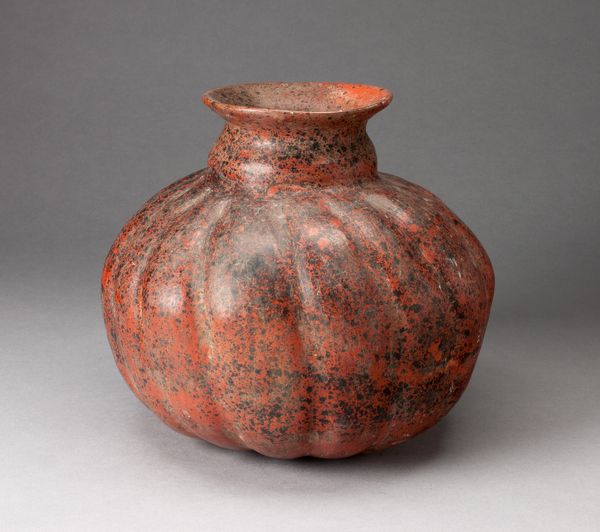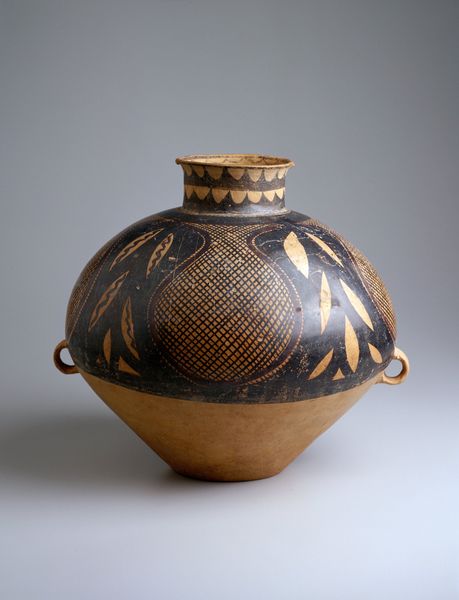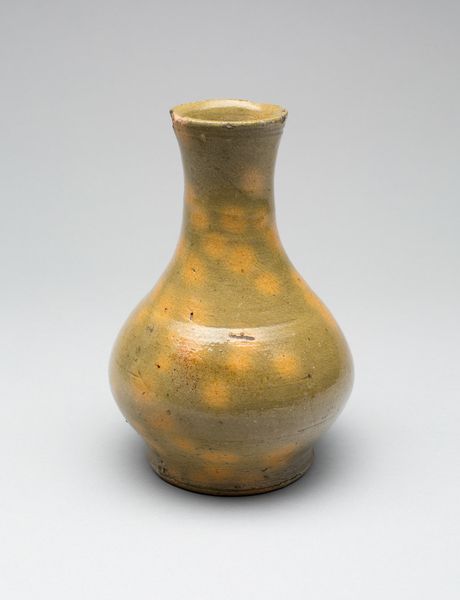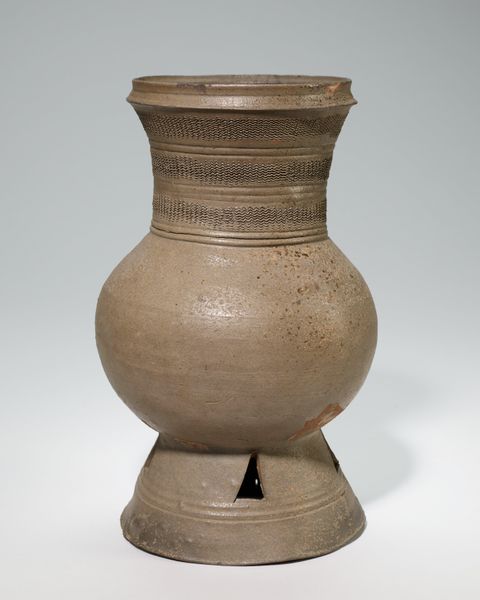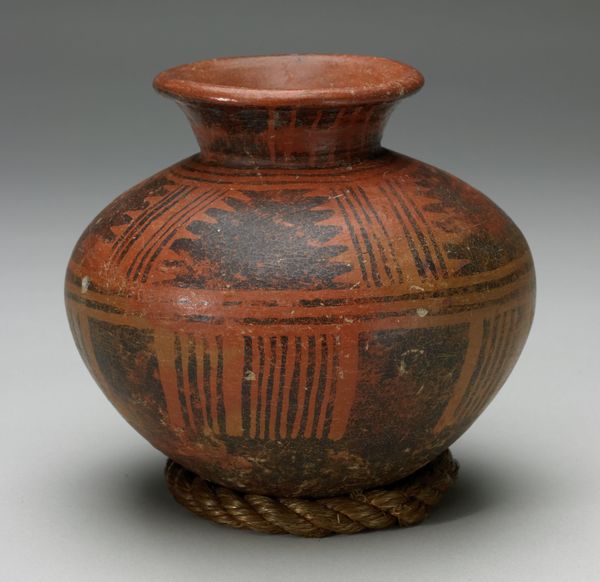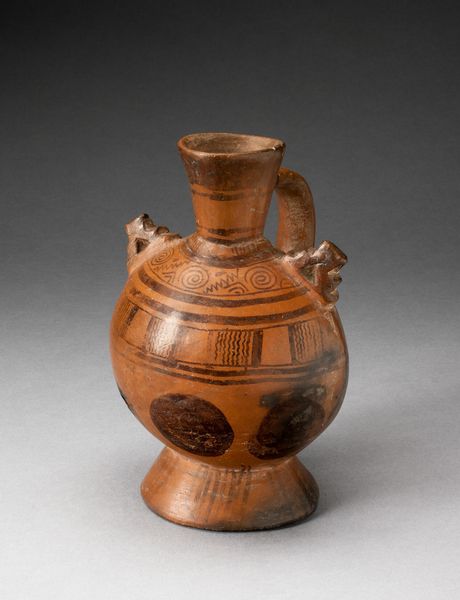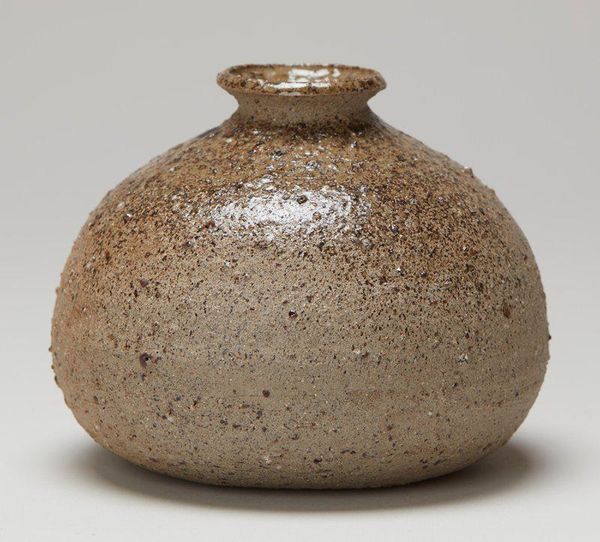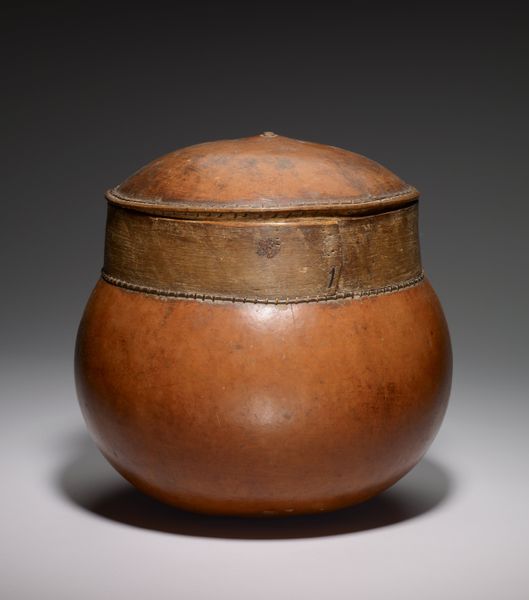
ceramic, earthenware
#
asian-art
#
ceramic
#
earthenware
#
stoneware
Copyright: Public Domain
Curator: Here we have a jar, a utilitarian object, dating from 918 to 1392. It resides here at the Minneapolis Institute of Art. Its maker is, sadly, anonymous. Editor: It’s so unassuming at first glance. Its round, squat body and that rustic glaze make it feel quite earthy and grounding. The dark brown stoneware gives off a distinctly warm and somewhat melancholy mood. Curator: Absolutely, and that earthiness speaks volumes when we situate it within its cultural context. Consider the period in which it was crafted; thinking about access to clean water and secure storage impacts how such a vessel might be viewed as both precious and functional in society. We are talking late Shilla to early Goryeo dynasties here. What roles would class, or perhaps access to trade routes play here, when thinking of a vessel like this one? Editor: That context of late Shilla to Goryeo, its modes of manufacture are important as well. Think about the labor that went into procuring the raw materials, the firing techniques... each stage of creation tied to the community and available resources, speaking volumes of a system of creation in this moment. I want to hold this object! I imagine the texture and weight speak volumes. Curator: The very anonymity of the artist shifts our perspective as well, don’t you think? We can explore how that anonymity intersects with concepts of cultural identity, the artistic collective versus the individual. Its plain design almost normalizes function above expression. In its anonymity there's a levelling—a stripping away of the cult of personality in favor of use and function. Editor: True! And I would wonder, with a beautiful object like this, that seems relatively untouched from generations ago, what kind of legacy of labor surrounds this? A direct chain of labor passed down through history. Curator: Thinking through its presence now, it prompts consideration of what we, as a culture, choose to preserve, what gets lost, and whose stories get told. It’s a subtle act of resistance against forgetting, perhaps? Editor: Perhaps! For me, it stands as a poignant reminder of material culture as an indicator of collective memory and identity. It silently insists on its history.
Comments
No comments
Be the first to comment and join the conversation on the ultimate creative platform.
